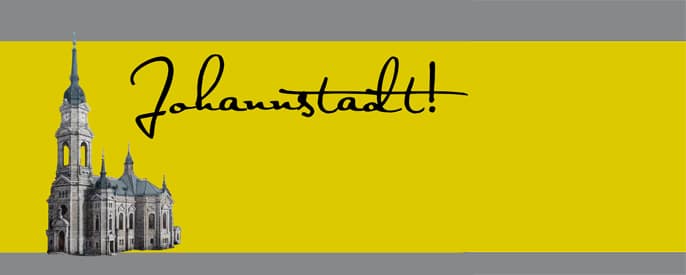Diese Seite ist mehrsprachig verfügbar: English, Русский, عربي.
Folgen Sie dem Verlauf der Gerokstraße bis zur Einmündung der Dürerstraße. Dort befindet sich der 12. und letzte Standort des historischen Rundwegs.
Vor 1945: Trocknen, Turnen und Telefonieren
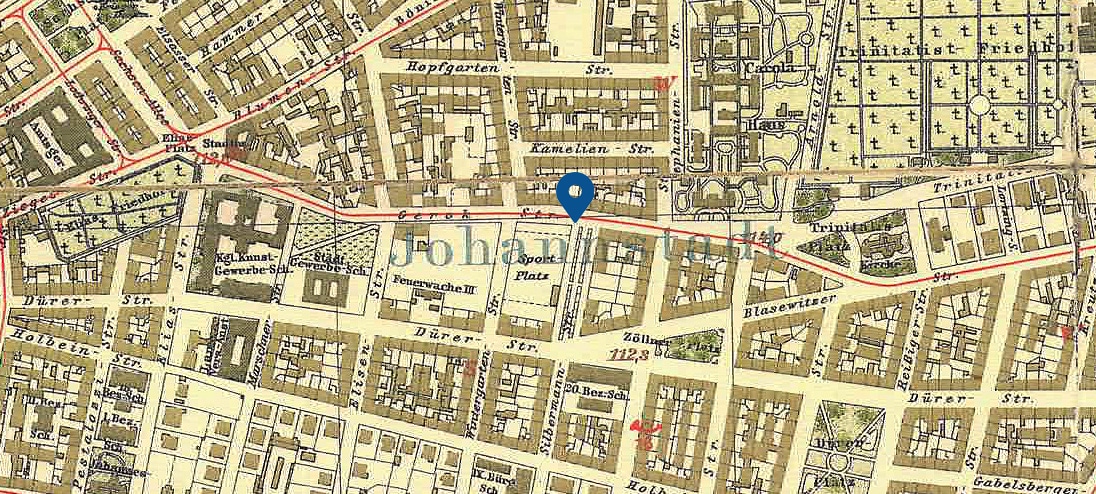
Vom Wäschetrockenplatz zum Postamt Nr. 16
Auf älteren Stadtplänen ist im Bereich der heutigen Permoser- und Dürerstraße eine Speisewirtschaft „Zur alten Vogelwiese“ zu erkennen, die auf den früheren Standort der Dresdner Vogelwiese hindeutet. An gleicher Stelle existierte um 1900 ein gewerblicher Wäschetrockenplatz inmitten des Wohngebietes, der vor 1910 einem Turn- und Sportplatz und 1934 einem heute noch vorhandenen Schulneubau weichen musste.
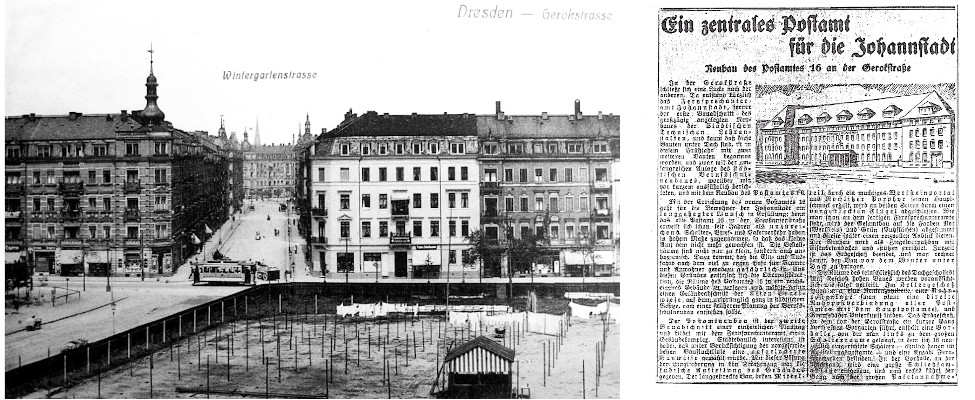
Rechts: Artikel zum Neubau des Postamtes Gerokstraße. Quelle: Dresdner Anzeiger, aus der Sammlung Gonschorek
1926 entstand direkt neben dem Wäscheplatz das Postamt Nr. 16 in zwei Bauabschnitten. Das Bauwerk vereint einen mehrflügeligen Stahlbetonbau mit traditioneller Kubatur, schlichter Putzfassade und einer Sockelverkleidung aus Rochlitzer Porphyr. Besondere Akzente brachten der Eingangsportikus, die Risalite (Vorsprünge) und vor allem die platzartige Aufweitung vor dem Gebäude. Neben der Reichspost und dem Fernsprechamt gab es im Gebäude auch eine Werkstatt für Telefonapparate.
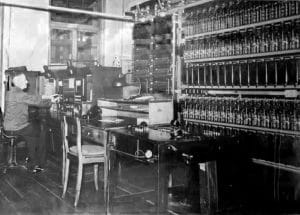
Auf der Rückseite der Post befand sich, zurückgesetzt in einer hofartigen Situation, die Feuerwache III. Hier kamen Pferde als Zugtiere zum Einsatz. Nach dem Ersten Weltkrieg entstand aus der Feuerwache eine Krankenbeförderungszentrale mit Totenwagen. Das Gebäude fiel 1945 den Bomben zum Opfer. An exakt gleicher Stelle steht heute der Netto-Markt.
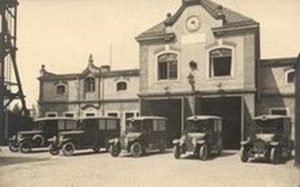
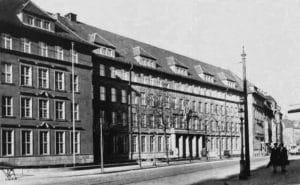
Burenhaus und Silbermannstraße
An der Silbermannstraße Nr. 22 stand einst das Burenhaus, das die ca. 100 im Zuge der Burenkriege aus Südafrika geflüchteten „Weißafrikaner“ errichten ließen. Die Fertigstellung feierten die Bewohner am 25. Juli 1901 zusammen mit der Enthüllung eines Denkmals des transvaalischen Präsidenten Ohm Paul Kruger, das in die Fassade eingelassen war. Die Rollläden waren farbig in den Landesfarben blau-weiß-rot gehalten.
Die vor dem Burenhaus verlaufende, 1883 angelegte Silbermannstraße reichte damals von der Striesener Straße vorbei am Zöllnerplatz bis zur Gerokstraße. Der ursprüngliche Verlauf ist an den alten Eschen noch gut zu erkennen. Den Namen erhielt die Straße nach dem berühmten Orgel- und Klavierbauer Gottfried Silbermann (1683-1753). Von 1923 bis zur Schließung durch die Nationalsozialisten 1935 befand sich in der Nr. 5 die reformpädagogische Dürerschule.
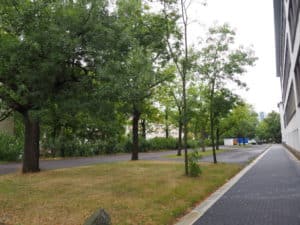
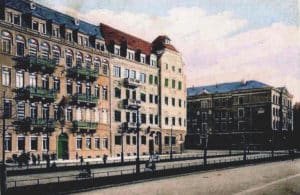
Nach 1945: Große Rechner, hohe Schulen, schmale Filme
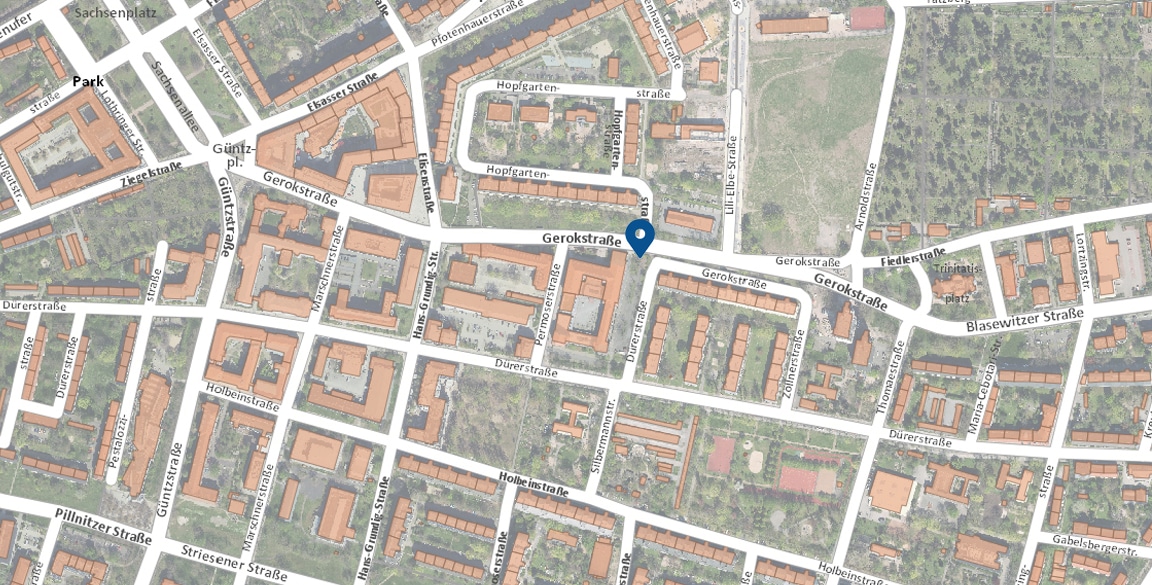
Von der Enttrümmerung zum Großrechner
Die Luftangriffe im Februar 1945 beschädigten fast alle Gebäude an der Gerokstraße so stark, dass sie in den Folgejahren zum Abriss kamen. Das Postamt hingegen konnte bis 1953 wiederaufgebaut werden. In den Jahren 1967-69 investierte das Ministerium für Post- und Fernmeldewesen der DDR über drei Millionen Mark in einen der ersten Großrechner des Landes (Typ R300), der in Radeberg entstand. Zum Rechner errichtete man ein passendes Gebäude, das bis heute erhalten ist. Hier verarbeitete bis 1990 die Deutsche Post alle Gehaltsabrechnungen. Nach der Verschrottung des Großrechners nutzte die Post das Gebäude nur noch als Mensa. 2020 steht es leer. Der unauffällige Bau mit der typischen farbigen Flachglasfassade ist eines der letzten Beispiele der Industriearchitektur der 1960er Jahre.
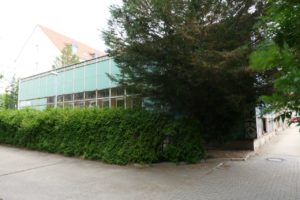
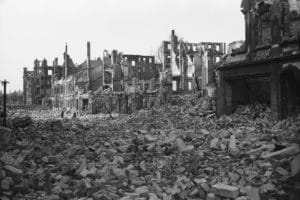
Das berufliche Schulzentrum für Technik Gustav Anton Zeuner
Der Schulkomplex des heutigen Berufsschulzentrums für Technik Gustav Anton Zeuner mit seinen Hofanlagen zählt zu den modernsten Schulbauten seiner Entstehungszeit. Das als Stahlbetonbau durch Stadtbaurat Paul Wolf geplante und 1934 nach erheblichem Bauverzug mit großem propagandistischem Aufwand durch die Nationalsozialisten als Horst-Wessel-Schule eröffnete Gebäude an der Gerokstraße hatte durch die Bombardierung nur mittlere Schäden erlitten. Es vereinte unter seinem Dach drei Altstädter Knabenberufsschulen, alle kaufmännischen und diverse gewerbliche Berufsschulklassen.
Zahlreiche ortsansässige Firmen halfen nach 1945, die Schule wieder aufzubauen. Da alle Volksschulen total zerstört waren, wurde 1948 die 53. Volksschule in das Gebäude einquartiert, die als spätere 53. Polytechnische Oberschule bis Mitte der 1980er Jahre dort ansässig blieb. Die Berufsschule war seit 1955 zunächst in zwei gewerbliche Berufsschulen geteilt und wurde 1969 unter dem Namen „Kommunale Berufsschule 1“ wieder zusammengeführt. Seit 2004 trägt die Schule den Namen „Berufliches Schulzentrum für Technik ´Gustav Anton Zeuner“. Im aktuellen Profil haben die Berufsschule, die Berufsfachschule, die Fachschule und die Fachoberschule ihren festen Platz gefunden. In der Einrichtung erhalten jährlich rund 1.900 Schüler in den Berufen der Kraftfahrzeugtechnik, der Metalltechnik sowie der Sanitär-, Heizungs- und Klimatechnik ihre Ausbildung.
Weitere Informationen rund um die Geschichte des Berufsschulzentrums finden Sie hier.
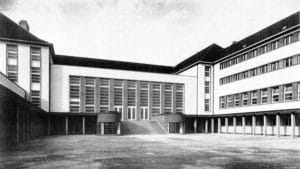
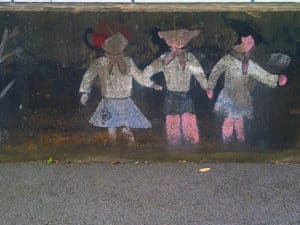
Cineastische Keimzelle des Dresdner Programmkinos
Nach 1990 etablierte sich im Hörsaalgebäude der Ingenieurhochschule (heutige Evangelische Hochschule für Soziale Arbeit) das Filmtheater Nickelodeon als erstes privatgeführtes, später studentisches Programmkino nach der Wende. Inhaber war der „Kinokönig“ Frank Apel, der in den Folgejahren als Betreiber der Programmkinos Schauburg und Casablanca in der Neustadt, des KIF (Kino in der Fabrik) in Löbtau und des Großkinos Metropolis am Waldschlösschen über die Landesgrenzen hinaus bekannt war. In der Turnhalle des heutigen Berufsschulzentrums befand sich außerdem das von einer Schülerinitiative geführte Filmtheater Gerokstraße.
Weitere Informationen zum Filmtheater Nickelodeon erhalten Sie hier.
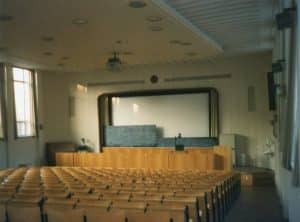
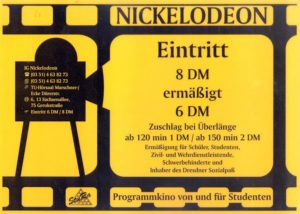
Text: Matthias Erfurth, Matthias Kunert, Henning Seidler
Redaktionsschluss: Januar 2024
